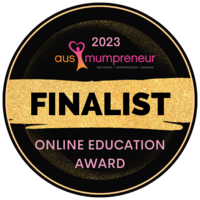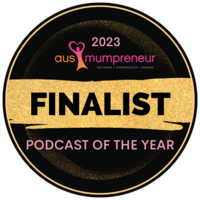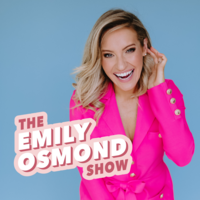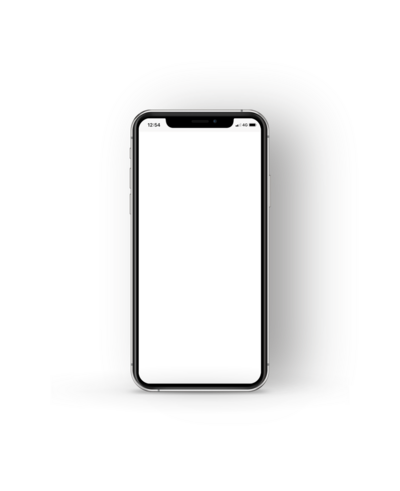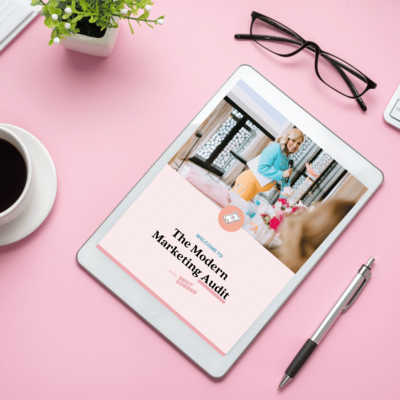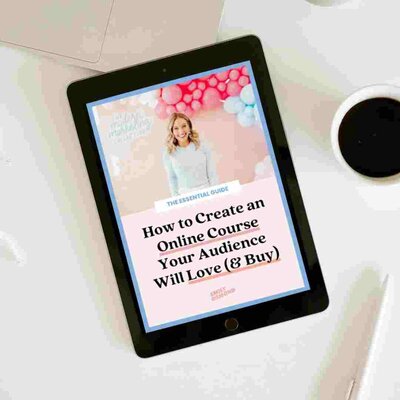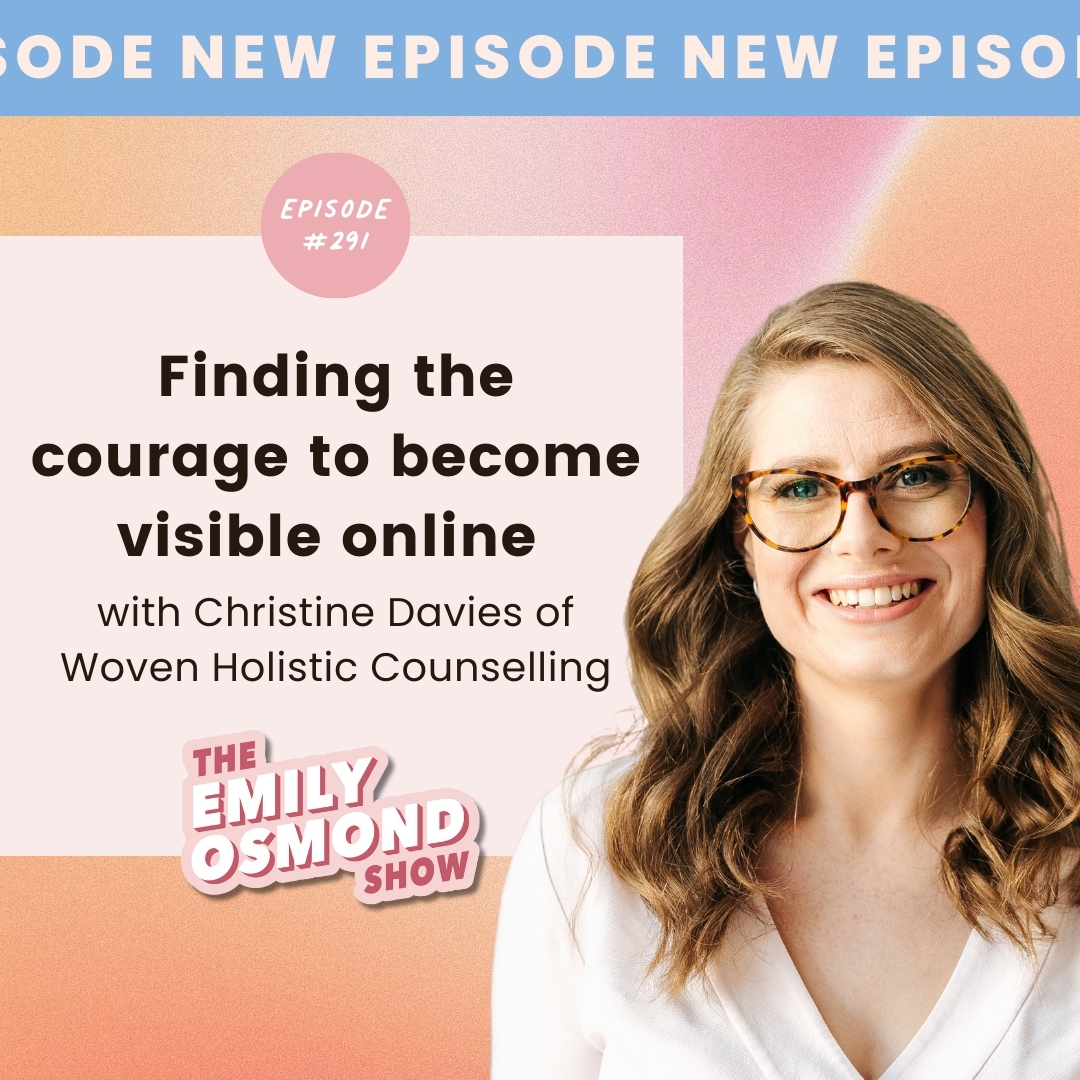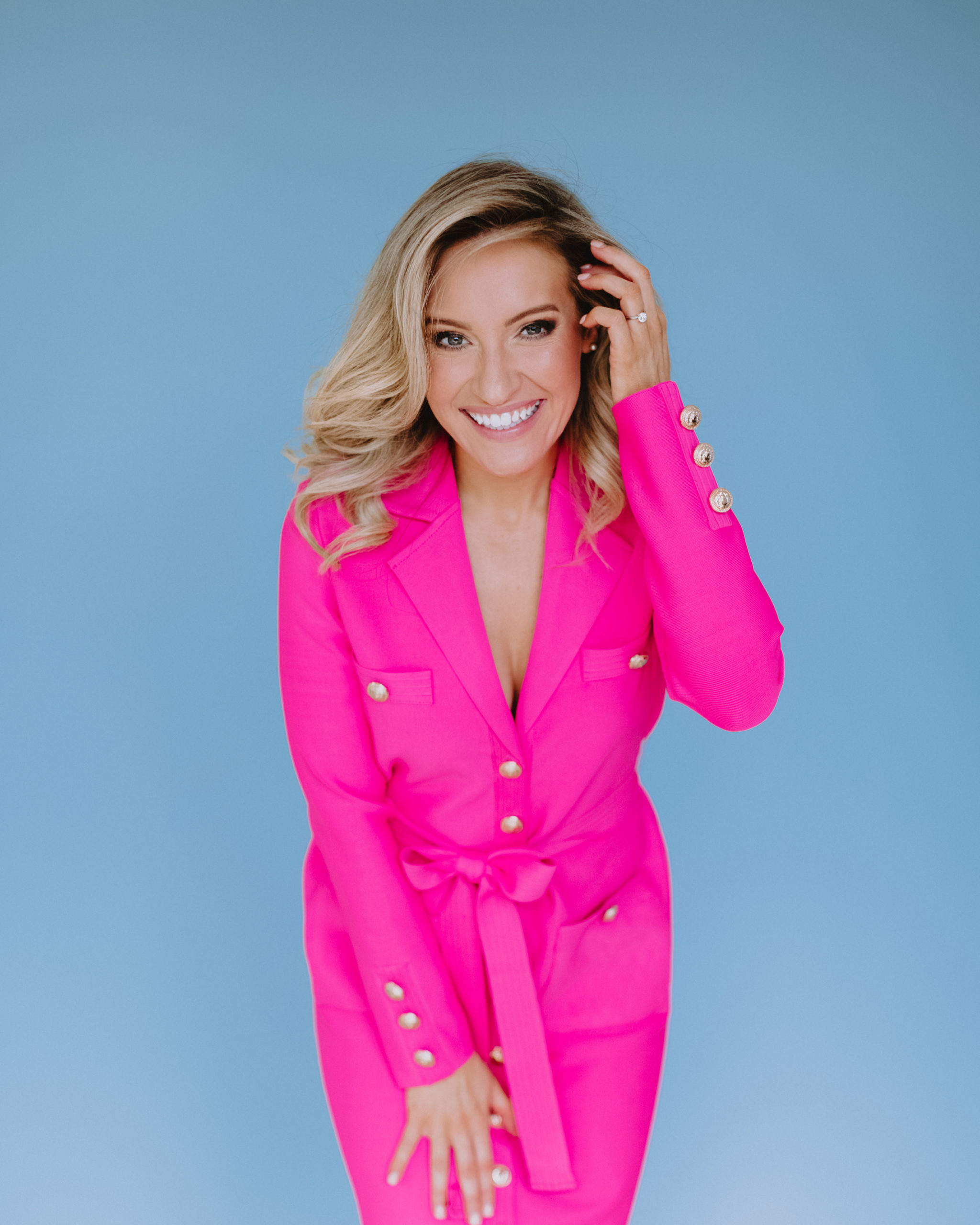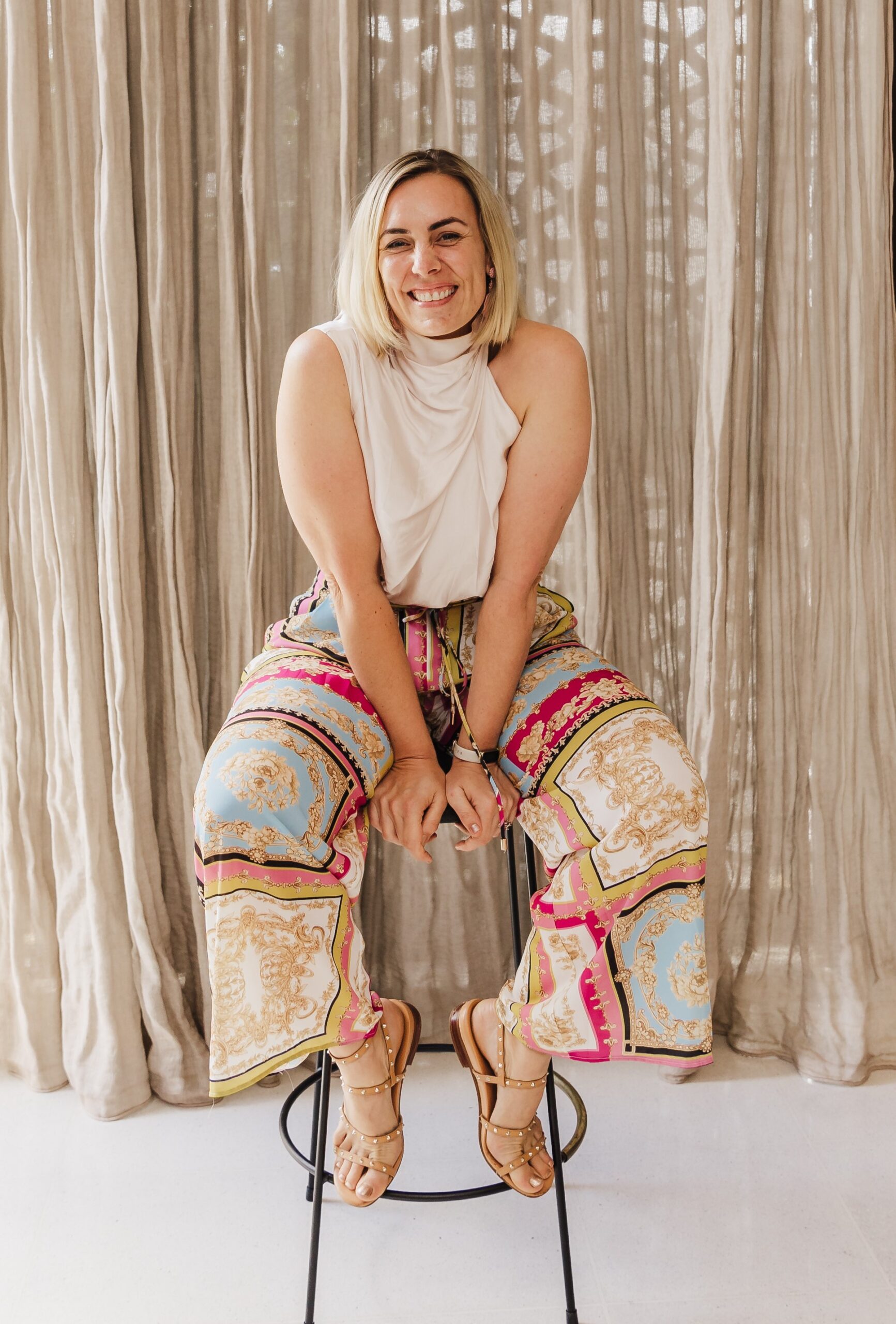explore now
Save big on my go-to tools & tech
Fav Tools


tune in now
Tune into the top rated podcast for practical strategies and candid conversations with entrepreneurs
podcast
The Emily Osmond Show


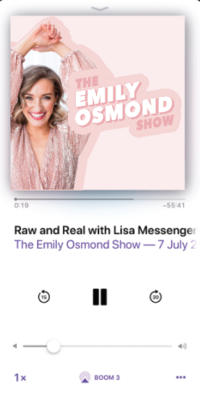



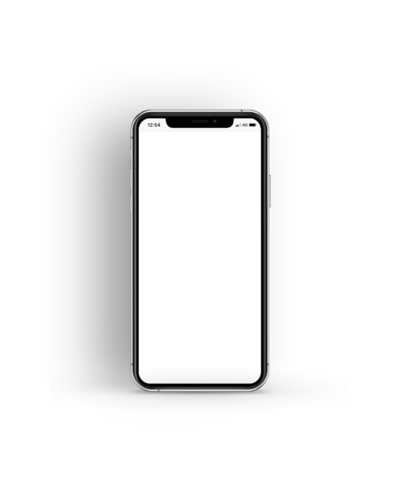

learn more
I’m an international marketing coach, top-ranking podcast host, speaker, interiors lover and black coffee drinker.
Hey, I'm Emily




How Cass Aggett went from public servant to web design business owner working with ideal clients
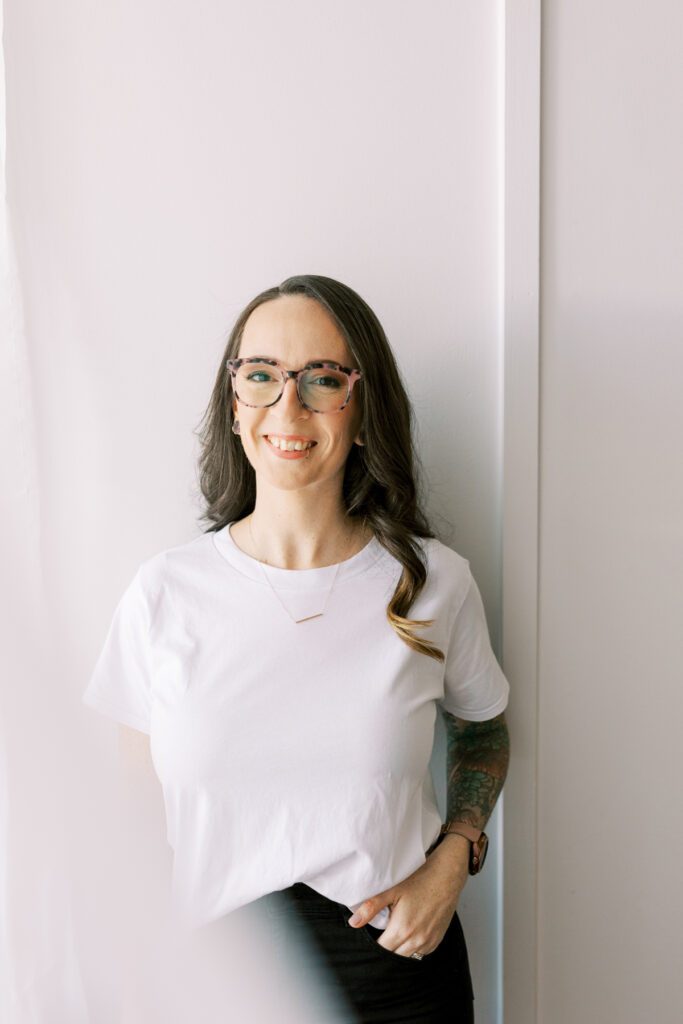

Leaving a full-time job to start your own business is a huge decision that is both exciting and terrifying at the same time. It takes so much courage to take that leap of faith and pursue your entrepreneurial dreams but it can be so rewarding and fulfilling.
WELCOME CASS AGGETT
In this episode, I’m chatting with Cass Aggett who bravely made this leap and started her own web design business after a career as a public servant. Cass helps female founders of health and wellness businesses to showcase the expertise through a strategic website and aligned branding.
In this conversation we discuss how Cass has evolved her business over time, where she started, the types of offerings that she started out with, and how these have evolved and grown. Cass shares the decisions made behind choosing where to place her focus, as well as finding her ideal client.
NICHING DOWN TO FIND YOUR IDEAL CLIENTS
Through a fluke, early on in her business Cass found that she was working largely with clients in the health and wellness industry and found that she absolutely loved it. She explores how she managed to niche down heavily into this specific industry and was able to then attract more of her ideal clients.
MAKING THE LEAP TO WORK IN YOUR BUSINESS FULL TIME
Cass also shares what that process has looked like from leaving her public service role to working full time in her business. She discusses the strategies and the planning around her schedule that she’s implemented to help her really set herself up to be productive, flexible and happy in her own business.
PROGRESS OVER PERFECTION
Cass is a serial perfectionist and had to learn that progress is far better than perfection. She advises us to spend our time effectively and get our offerings out there to the world and then we can refine them if needed.
Finding the courage to leave your full-time job and start your own business is not an easy task, but it can be one of the most rewarding things you can do. I absolutely loved listening to Cass’ experience and advice. She generously gives us her biggest tips for growing a business so make sure you tune in and listen carefully!
LINKS:
Where to find Cass Aggett:
Website: https://www.cassaggett.com.au/
Facebook: https://www.facebook.com/cass.aggett
Instagram: https://www.instagram.com/cass.aggett/
[00:00:00] Emily Osmond: Just what is possible for you when you work full-time in a job, but you have a real itch to do something of your own. In this episode, you are going to hear how Cass Aggett did this. She went from being a full-time public servant to now a full-time business owner with her own Squarespace website and brand design business. Cass helps female founders of health and wellness businesses specifically to showcase the expertise through a strategic website and aligned branding. Cass’s focus is on meaningful design specifically for the non-corporate types who want something that really reflects a business that they’ve worked so hard to build.
[00:01:27] Cass is based in Brisbane, Australia, and she works with women across this country and internationally, and in this episode, we discuss how Cass has evolved her business over time, where she started, the types of offerings that she started out with, and how these have evolved and grown, and the decisions she made behind those, as well as how she’s really figured out who her ideal client is and the process that went behind that, along with nicheing more heavily and specifically into attracting more of those ideal clients. Cass also shares what that process has looked like from leaving her job to working fully in her business and some of the challenges that she has experienced along the way, and also the strategies that she’s implemented to help her really set herself up to be productive and happy in her own business.
[00:02:20] Along with Cass shares, two of her biggest tips for those growing their own business, and these are such brilliant ones, I know that you’re going to get a lot from them. So without further ado, please allow me to introduce you to Cass Aggett.
[00:02:35] Well, Cass, thank you for joining me.
[00:02:43] Cass Aggett: Thanks Emily. Emily, it’s so great to be here.
[00:02:46] Emily Osmond: Ah, awesome. Awesome. Well, I’m excited to chat with you, and dig into a little bit more about your business. So let’s start off with what exactly is that you do? What does your business look like? What do you offer?
[00:02:58] Cass Aggett: Yeah. Okay. Well, I am a Squarespace web designer for women in health and wellness. So I’ve done a bit of nicheing and I’ve found this is the area that I really love to work in. and it’s actually quite a broad area. So, some of my past clients have included psychologists, midwives, coaches, all the way to things like astrologers and taro readers, which is really cool.
[00:03:17] And yeah, I love working in this area because there’s such a variety of ways to support people and supporting women’s health and wellness. So it never gets boring. and as well, I get to see how much my clients love the work that they do for their clients, which then makes me love what I do even more.
[00:03:33] Emily Osmond: So good. And when you get to work with clients that you, care about what they’re doing and you can see that they care so much about the work that they’re doing, it just makes it all really fulfilling, I think, versus-
[00:03:43] Cass Aggett: Yeah,
[00:03:44] Emily Osmond: -Yeah, perhaps people aren’t quite as passionate or interested or just doing it for one reason, and that’s all. Yeah.
[00:03:49] Cass Aggett: Yeah, definitely. I’ve really found with this industry, I mean, I guess there, there obviously are a lot of industries where people love what they do, but just this one, the health and wellness in particular, you can just really see the passion, when people turn up and they do their job and they’re just, they’re so focused on how they can serve, and I love that.
[00:04:06] Emily Osmond: Yeah. Yeah. So what are your different offers, Cass, in your business? I know that you do some, website design, you also have very cool new-ish offering, being the templates, but I’ll let you explain. Yeah. What are, what are the different offerings you have? How can people buy from you?
[00:04:21] Cass Aggett: Yeah, so my main offering is, custom Squarespace website design. So Squarespace is my main focus with all of my services because I find it’s just such an easy platform, for my clients to use. So other ways that you can work with me, I’ve just started offering website audits, which I find is a great way for people to get their website where it needs to be, but maybe they’ve DIY in the past and they’re just not quite sure what to do next. So the audit’s a great way to get some really personalized feedback on things that they can do that will actually make a difference for their website and the goals that they’re trying to achieve.
[00:04:55] I also offer regular website maintenance. So if you have, different maintenance needs throughout the month, maybe you need a hand getting some blog posts up there, or if you offer frequent classes, maybe you need help with scheduling, that kind of thing. Like so many different systems roll into a website.
[00:05:12] Emily Osmond: Lots of integrations.
[00:05:13] Cass Aggett: Yeah, definitely. I’ve got a few different tiers of the website maintenance. I also do, VIP days, which is basically a day that I dedicate just to one client and we can work on a set number of things. So one of them might be, they’re happy with their website, but maybe they’ve had a rebrand.
[00:05:30] So we go in and we fix up all of their colours, all of their branding, pop in their new photos, make sure it’s all current. and that way it feels like they’ve just had this big refresh when really it’s, it’s the same bones. But they’ve still got that current feeling, you know, it matches all of their other platforms.
[00:05:46] And then also, one of the supplementary services I’ve, been offering is brand design for, mostly for women who are a bit newer in business. So, maybe they’re not quite ready for the full branding package, but when they’re getting their website, they need just a logo, some colours, and some direction to make sure it still speaks to their ideal client.
[00:06:05] So I’ve really been enjoying, kind of melding those ones together.
[00:06:08] Emily Osmond: Mm, I bet it’s very helpful. Well, essential for you really to do a gorgeous, great website, you need to have the brand colours, and I can imagine if someone comes to you and they’re, maybe they, what? What’s the normal scenario? Would someone come to you? Maybe they do have a logo and that’s about it. Or some of them I, in terms of when you are offering the brand design?
[00:06:28] Cass Aggett: It, it really varies. it depends so much on how long people have been in business, whether they’re a sole trader, whether they’ve got a physical space. So I find often people that have the physical space are more likely to have been through the full branding process from the start because they’ll be getting their big signage done, so they wanna have something professional up there.
[00:06:46] But then others who have started as more of a sign hustle, like me for example, you know, you put together your own logo really quickly and then years down the track you go, oh, I’ve grown my business so much and it just no longer fits with where I am. So that’s a really good stage where I feel like I can help with that branding along with the website.
[00:07:04] Emily Osmond: So good. Okay, Cass, so we’ve looked at you, you do the audits, the web design, some maintenance, the VIP day where people can just get together with you and get things done, really, make some big process there. Also, the brand design. What else do you offer?
[00:07:19] Cass Aggett: So I’ve started offering Squarespace website templates. I’m just about to release a new one. I’ve just gotta do like the background, the how to manual, that kind of thing.
[00:07:28] So they’re a great option for people who really would like a professional looking website that they’re either not ready or they don’t have the budget yet for a full custom design. So that way at least they’ll know that someone’s kind of designed in a way more close to what they need for their business without having to worry about that full custom aspect.
[00:07:47] And the great thing about it is it’s really easy to swap out your own colours. you can copy and paste your information, like into the different text boxes. You can replace photos. So while it’s a bit of work, it’s quite simple to do. It might just take a bit of time.
[00:08:00] So, yeah, that’s, something that I’ve really been enjoying building kind of in the background, and I’m so excited to build more and release those ones this
[00:08:07] Emily Osmond: Yes. And um, what’s the idea, I guess, business wise behind offering the templates in your business?
[00:08:15] Cass Aggett: Honestly, I would love to be able to build in a bit of recurring revenue, and maybe not recurring is the right word.
[00:08:22] Emily Osmond: Leveraged passive.
[00:08:24] Cass Aggett: Yeah. Passive, but not quite. Cuz there’s still a little bit of, of manual work involved. but it’s, it’s relatively minimal. But I think that having these available where I’ve spent all of this time up front to create it, that then provides so much value for people for that lower price point, which is what I really love.
[00:08:42] Emily Osmond: Yeah, I love that Cass. Super smart. A really good way for you to, diversify and look at ways, like you said, it’s, the work upfront, which is what maybe puts a lot of people off, same as creating a course or creating a membership or whatever it might look like. But once you’ve done that, then it’s, it really becomes about the marketing and then, getting it in front of the right people that can help.
[00:09:02] Cass Aggett: Yeah, the marketing is the next thing that I’m focusing for the templates, because I have changed my niche slightly in the last year or so, so I’m just making sure I get all that background stuff up to scratch first, and then I’m gonna really focus on marketing to, to my niche now.
[00:09:16] Emily Osmond: Awesome. That leads actually really well, Cass, into what I wanted to talk about next it, which is how your business has changed over time. What did the business start, like? How did it start? When did it start?
[00:09:28] What did it look like then compared to now?
[00:09:30] Cass Aggett: It started quite differently. So I started in 2020 as a virtual assistant. it was a side hustle. I was still working. I think it was full-time, five days a week at that point. and I pretty quickly joined The Modern Market, Marketing Collective and my first few clients were also members, which was really nice to start building that network.
[00:09:49] Emily Osmond: And I didn’t even realize some of this until I saw, one of our members, their branding pop up on their Instagram and I didn’t know it was your brand like that you had done it. And I was like, oh, I love your brand. It’s gorgeous. And she’s like, yeah, Cass did it.
[00:10:02] Cass Aggett: Yeah, and I’m doing some more for her soon too, as well. yeah, so I initially started doing, virtual assistant work, and some various admin tasks, so creating and tidying up documents, creating PowerPoint templates, canvas templates, and updating websites and different systems related to that. And one of these clients, my very first client from the Modern Marketing Collective had a Squarespace website that needed updating.
[00:10:25] So I quickly started diving into the platform so I could really get to know it, so I could help her as best as I could. And I realized how great a platform it was for small businesses and so, I think that was from the middle of 2020. So from then until the end of the year, I just, I dived so much into the platform trying to work out how I can just get to know everything about it.
[00:10:47] And I just, I loved it so much that I started looking at the design aspects as well because I’ve been pretty creative my whole life, but as a profession, it, it never occurred to me to try and bring that into it, which is so strange now that I think about it. But yeah, compared to what I’d been using at the time, which was various other platforms, which I won’t go through, Squarespace was just such a breeze.
[00:11:09] So I started thinking, Hey, this could be fun to add on, this bit of creative work. instead of just doing the admin side, maybe I could start helping with the design side. So many YouTube videos, blog posts. I started getting a real hang of it and then I eventually joined a Squarespace course to learn the ins and outs of it.
[00:11:28] That was my first of two paid courses to learn everything I could about Squarespace. I started relearning how to code, I used to do that as a kid, my Geo Cities and Angel Fire websites.
[00:11:43] Emily Osmond: Oh my gosh, Cass.
[00:11:45] Cass Aggett: It brought back so many memories.
[00:11:47] Emily Osmond: I didn’t know you used to do that. That’s really cool.
[00:11:49] Cass Aggett: Yeah. I wish I had access to some of them. I tried looking it up the other day using the archive web thing, but obviously I couldn’t remember any of the names of the websites, but it would’ve been so funny. It would’ve been terrible.
[00:12:01] Emily Osmond: Such a good circle back though, hey, to what you used to love doing, and now you get to do that for your career.
[00:12:07] Cass Aggett: Strange. I would never have guessed.
[00:12:08] Emily Osmond: Yeah.
[00:12:09] Cass Aggett: Yeah, so after I kind of got my hand into the Squarespace design, I then also started doing some basic branding packages. So a bit of Canva, depending on what my clients were after. Cause I found that was a really easy way for them to be able to continue working on their brand. So, especially a lot of them were Instagram focused. And then, yeah, so when people are ready to move from their DIY logo to something a bit more established, we’ll say then I started offering that as well.
[00:12:33] Just as that next step up which I found has been really good to help the businesses grow just to that. that next level. Just help them, keep looking professional. Being proud to put their name out there instead of kind of hiding away. Cuz they’re like, oh, I’ve still got my DIY stuff, people aren’t gonna take me seriously.
[00:12:51] Emily Osmond: And it’s so funny, Cass, the number of people I speak to, and I’m like, oh, do you have, do you have a website? And they’re like, oh, I do. But please don’t look at it and they don’t wanna put it out. Oh, it’s not finished. Or it’s just a holding page. So it’s so important to have a website and to be proud of it and to know that it, it’s got current information on there and it’s a good representation of your business.
[00:13:09] Cass Aggett: Absolutely. And I’ve heard that so many times and just, I see the comments in Facebook groups and I just think you are paying for this website, like you’re paying that yearly fee, whether anyone can see it or not. And I just think, don’t you wanna be proud of it and have it actually working for your business? But yes, it’s, it’s definitely a big mindset thing I’ve found.
[00:13:28] Emily Osmond: Now, I’d love to talk about the niche side of things. You mentioned it at the start that you’ve kinda worked out the group of people, the types of business that you love working with, how do you think you arrived at that? What did you go through to be able to find out? How did you choose that? I know that you said that you find it really gives you great diversity.
[00:13:47] You love the type of work that these people do in the health and wellness space, but anything else you wanted to share around the aspect of niching?
[00:13:54] Cass Aggett: I think initially it was a bit of a fluke. There was probably the majority of my first clients in that first year somehow fell into that health and wellness industry, and I didn’t really pick it up at the time. I just thought, oh, these are all great people. They’ve got great businesses, they love what they do.
[00:14:09] And I didn’t really think anything of it because at that stage I was so new, I just thought, I just need to work with anyone. I don’t wanna say to people, no, I can’t work with you. So I accepted anyone that wanted to work with me. But the funny thing was, after I thought about it, kind of maybe a year and a half, two years in, I was looking back at previous clients, looking at my messaging.
[00:14:29] I was like, a lot of these people have something in common here. And it was when I really started to think about, okay, maybe I’ve got something here and I really need to focus on that. And I found doing that. It let me really narrow in on my messaging and what I wanted to offer and how I wanted to help people.
[00:14:51] So even though I kind of fell into it kind of accidentally. Once I’d realized that I was then able to really leverage that and start working with it instead of just, as a fluke
[00:15:00] Emily Osmond: So good, Cass. And that’s, what I recommend and say to people is, once you have had some clients, take a look at the clients that you loved to work. And this is what I did for my business too, was, okay, well let’s take a look at the clients I enjoyed working with the most, and then let’s find what those.
[00:15:15] Common threads are what the common characteristics or common threads or trends or similarities are between them. Because then once we know that and we’re conscious of it and we can articulate it, then we can put that into our messaging to attract more people like those that we love working with.
[00:15:32] And often it is kind of just happens, but then we can play a greater role in being directive of it and more active in, in finding more clients like that.
[00:15:42] Cass Aggett: Yeah, definitely.
[00:15:43] Emily Osmond: So, Cass, I would love to chat around. We’ve looked at how your business started out, how it’s evolved over time. how do you make your business work around your life?
[00:15:52] What is it that you, that is important to you outside of business and work and how do you make that work for you?
[00:15:57] Cass Aggett: In general I keep a pretty regular work schedule. I kind of try and set three days a week with pretty standard hours. I found I needed some routine because initially I kind of started just doing whatever, whenever I thought, I’m my own boss. I can work whenever I need to. And that was great and it worked, but it very quickly became draining.
[00:16:20] I was like, okay, I need to know this day I need to do this much work because then I’ve got more flexible time the rest of the week. So I settled on a nice three days of standard. and then depending on the week one or two weekdays will be really flexible. You know, I can go out to lunch and my wife’s not working.
[00:16:37] Emily Osmond: Yeah. Oh, that’s so good. Does she take a day off too?
[00:16:39] Cass Aggett: Yeah. Uh, No. So she’s working in hospitality, so she has hours all over the place, so they change week to week. But it’s great because now when we do get to go out, it’s usually not the weekends because she’s working so everywhere during the week is so much quieter, so we can go out and do things and it’s just, it’s such a nice difference.
[00:16:58] I frequently have no idea what day of the week
[00:17:01] Emily Osmond: Exactly.
[00:17:02] Cass Aggett: But, but it’s, it’s working really well.
[00:17:05] So, yeah. On days where my wife’s not working until later in the day, like maybe a five or 6:00 PM start that day, I’ll leave open to be able to go out or, or even, you know, stay home, watch a movie. If we haven’t done something like that for a while.
[00:17:19] Just be really open to moving things around. we’ll see family we know appointments, life stuff.
[00:17:25] Emily Osmond: I know. I’m like, when do people that have full-time jobs ever go to like the dentist or get their hair done
[00:17:29] Cass Aggett: I know the last few weeks I’ve had so many different things like that popping up and it’s been great because I’ve been, all right, okay, I can schedule this over here, I can move this work over here. I’ll do this after hours, . And then it got me thinking like when I was working five days a week, how did I do anything?
[00:17:47] So that, one thing I’m really grateful for is being able to be flexible.
[00:17:51] But I find having the regular, semi-regular hours each week helps me feel like I’m not working 24/7 because it’s so easy to slip into that. Oh, but I’ve got these things to do because it’s my business and I’m the only one in it currently, so I have to do it all the time whenever it pops into my brain
[00:18:10] Emily Osmond: Now, in terms of, I know when you started the Modern Marketing Collective, you had a full-time job.
[00:18:16] Cass Aggett: Yes.
[00:18:18] Cass Aggett: So when I first started my business, I was working five days a week. I think about a year in, I dropped to four days a week, which it was so nice to just be able to have that extra day. I was always told when I’d started that previous role, this is not a role that will work remote.
[00:18:32] It won’t work as part-time. Just put it out of your head. And of course this is all, you know, pre 2020. So none of that had entered my mind was like, yeah, of course.
[00:18:40] Emily Osmond: Of course.
[00:18:41] Cass Aggett: Yeah. And then, you know, 2020 and world events happened. So that all changed really quickly and I was like, you know what? I think I can do this job part-time.
[00:18:51] We’ve worked it out, different systems. I think I can do this. So, , I put forward my business case. And then I could use that extra day to work on my business. And I didn’t have to work every weekend depending on, client work I had. Obviously the busier months, sure I’d do an extra day on the weekend or after hours, but it just gave me that little bit more flexibility during the week just to focus on the business, which was great.
[00:19:16] And then when was it? June? July June, 2022. I finished my previous role, so now I’m full-time in my business.
[00:19:24] Emily Osmond: My God, this is so huge.
[00:19:26] Cass Aggett: Yeah, so it was a really nerve-wracking time. I’ve always been in a, in a similar role. It’s always been very, very secure, never had to worry about my employment basically, apart from, you know, jumping from a few temp contracts, but in general it was always just really secure.
[00:19:44] And then I made this transition to working in my business full-time. I was like, oh my God, this is so different. So it took a few months. Yeah, two or three months, I think, to really get my head into some new routines and work out how I wanted to structure my weeks and how I wanted to show up for myself, thankfully I haven’t been sick since I’ve been working in my own business full-time, but it’s allowed me to kind of now think, right, if I need to take time off or, wanna have a holiday, I’ve really got a plan for that because there’s no other backup anymore. Huge mindset shifts.
[00:20:18] Emily Osmond: Yes. And that’s the thing there. There’s pros and cons to everything. Hey, and it depends what your values and what you love the most and what’s most important to you. And it gives you that flexibility. And then there’s also the things to consider, like, okay, well yeah, holidays.
[00:20:33] How are we gonna make that work? let’s plan around that. It’s a, it’s not automatically kind of given and say see you later, Colleagues. I’m off.
[00:20:39] Cass Aggett: Yep. It’s very, very different.
[00:20:42] Emily Osmond: That leads me, actually, Cass, I wanted to ask you about the challenges that you’ve encountered, like we all do. What do those look like for.
[00:20:49] Cass Aggett: The biggest one has definitely been mindset. So there’s all the normal challenges when you’re new to business and self-employment like, you know, working out systems and processes. But a lot of that can be figured out with Google or
[00:21:00] Emily Osmond: I was about to say, hey Google that, but you can’t Google mindset. Likeyou can’t fix that with a google search.
[00:21:08] Cass Aggett: Don’t get me wrong, I Googled mindset stuff. I tried, but there’s only so much that reading something is going to get you. So it just takes time. I think the mindset changes are just, they’re harder, whether you’re working through it yourself or if you’ve got a coach. So I had been working with a coach for a while and I had the funniest realization most of my fear of putting myself out there wasn’t initially about failure, it was actually a fear of success.
[00:21:36] And because that would mean that, you know, my secure career that I’d had for so long would then have to go. So I’m in the side hustle going, oh, I want my business to be successful. But then I put myself out there.
[00:21:47] Emily Osmond: I can’t remember if we had that discussion or it was with another member, but I’ve, it’s not uncommon cuz then it means, well now I kind of maybe decision time.
[00:21:57] Cass Aggett: Yeah. That I think was the scariest part. Like once I’d realized, I was like, oh, if I keep saying I wanna go all in on my business, then I have to go all in on my business. I can’t just keep saying it. So strange.
[00:22:10] But yeah, so that, it wasn’t a bad thing, but it was just it took a, a bit of work to get through the mindset stuff, but I mean, it’s, it’s always going to be a work in progress.
[00:22:19] But that initial one was, yeah, it’s, it was a bit of a hurdle.
[00:22:22] Emily Osmond: It was probably a little unexpected perhaps, because I think we hear often around the fear of failure and putting ourselves out there and what if it doesn’t work, but I think it’s just as common. I know that I’ve had discussions with people around the fear of success and, and around what then happens and what might happen
[00:22:36] Cass Aggett: Yeah.
[00:22:37] Emily Osmond: Yeah.
[00:22:38] Cass Aggett: Yeah. It was definitely something that I’d never considered as a possibility. But to hear the other people, have those, those mindset. Things as well, those hangups. It’s, I don’t wanna say, it’s nice to know because it would be so great if none of us had those issues. We could just get on with it.
[00:22:53] But I guess it’s, it’s nice in a way to know that it’s not just you, that everyone goes through really similar things, especially if they’re moving from something secure to something they’re building from the ground up.
[00:23:03] Emily Osmond: Absolutely. Cass, Let’s go to your marketing. How are clients finding you? What’s going well? What are you experimenting with? Talk to us about your marketing.
[00:23:12] Cass Aggett: Yeah. So far Instagram and networking groups have been my most. And my greatest marketing tactics.
[00:23:18] So I was actually looking at all my numbers the other day comparing all of my different channels and yeah, Instagram and networking have been the biggest drivers. Google has been a bit as well but I mean, SEO stuff can take so much time and especially if you’re like me up until this point, you keep changing your messaging so you kind of keep, keep ruining your rankings. Yeah, Instagram and networking have been really great as well as referrals. So previous clients have been a great way to attract new business. And it’s really nice to know that I’ve already got a mutual connection when a new client comes my way. So it’s like some of that trust is already there, which is so important in a new relationship.
[00:23:56] Emily Osmond: Absolutely. I’d love you to expand on Instagram when you say that exactly, how exactly are you doing that? What’s working, or even a couple of tips for those listening to make it work?
[00:24:05] Cass Aggett: Yeah. So most of this, if not all of this, I probably learned from the Modern, Modern Marketing Collective. So I really made sure my Instagram bio was clear who I was serving and how the clear profile photo clear call to action, all that kind of thing. I also engage with a lot of people in my niche.
[00:24:22] Many of them I’ve been following for years. And I guess just with the industry, I’m really interested in all of the content anyway, so I don’t feel like I’m engaging just as part of like a sales process. Like I’m genuinely interested in what they’re writing. So like, even though I don’t have kids at the moment, I have so much knowledge about, pregnancy and parenting and I’m reading it going, oh my God, I didn’t know this. Like, share. So it’s, it’s been a great way to start getting to know people. And then when I have had some people come through to come to me through Instagram, they’d be like, oh, I’ve been meaning to reach out to you for years.
[00:24:55] You’ve been on my radar. Just hasn’t been the right time. And so we’ve already got some of those connections there, which I find really nice.
[00:25:01] Emily Osmond: Yes. Mm. I love it when you, it, it, it’s just that realisation that, it can take a while. Not everyone’s immediately ready for what we have to offer, but there’s always people that are watching and considering, and maybe like they’ve said to you, Cass, oh, I’ve been meaning to do this for ages, or I’ve been wanting to, and it’s not been quite the right time, or whatever it might be, but it’s really nice to know that there’s people in our audience and that would love to work with us, and it can take a couple of years for that to happen
[00:25:30] Cass Aggett: Definitely. And it just really tells me that you have to keep being consistent. So you know, if you drop off Instagram or you know, pick whichever marketing channel for six months or 12 months, and people are kind of scrolling through looking, they’ll be like, oh, well they’re clearly not in business anymore, so we’ll scratch them off my potential list.
[00:25:48] Even if they’re not actively looking at that time, they’ll be like, oh, they’ve gone out of business.
[00:25:52] And also just with the consistency, just constantly providing value. And it doesn’t have to be big things either. Just little snippets. the being reciprocal likes, comments, you know, really engaging properly with the accounts instead of just doing it in like a spammy way, which, you know, we’ve all seen those accounts and it’s, you don’t wanna be one of them. So just really focusing on those genuine connections
[00:26:13] Emily Osmond: Hmm. I would love you to expand. When you say um, giving value, what does that look like to you? How do you do that through your content?
[00:26:21] Cass Aggett: Uh, with my content, I like to provide little tips and tricks specifically with Squarespace. You know, little bits on branding, like if you do DIY, you’re branding you know, that’s perfectly okay if you’re starting. You don’t have the budget. So one of my favourite tricks with that is make sure you use a transparent background.
[00:26:37] Just little things like that to help people get where they need to be. Even if they’re not quite ready to engage with me in a paid service, I still wanna be able to provide value.
[00:26:46] Emily Osmond: And that’s a mindset thing too, versus I think the flip side of that is, well, I don’t wanna give too much away. If I show people how to DIY their colours or they’re, then they’re not gonna work with me, then they’re going to be, they’re gonna go do it themselves. But I think it’s, no, well talk, you talk to me about that. Like around that?
[00:27:03] Cass Aggett: That’s, it’s definitely something that I think a lot of creatives consider at some point or another. But when you really think about it about who you are serving, there are so many different people out there that will need different parts of what you’re offering. So if I wanna work with someone in a full custom branding, custom website package, they’re not the same person that’s going to be happy to go away in DIY. So that person that really wants to DIY. They’re not gonna be coming to me for that custom package anyway. So there’s always gonna be different levels of what people wanna do. So, you know, that’s why I’ve started offering the templates, website templates, because not everyone wants or needs a custom website.
[00:27:43] Some people just love to be able to get in there and do things themselves, so that way I can still provide that, that value, that starting point, but then they can go away and have the fun with it and be able to do that bit themselves.
[00:27:55] Emily Osmond: So good. So let’s go to, I’d love to hear Cass about your favourite moments in business, or the most rewarding things, or your biggest wins. What have they look like for you?
[00:28:04] Cass Aggett: So I was thinking about this earlier. And I think the feedback that I get from my clients is probably my favourite thing of my business, apart from actually getting to do the creative, fun stuff, but seeing the feedback that clients send through, whether it’s in like little snippets in Instagram DMs or emails or on Google reviews it’s just, I’d love that feeling of just knowing that people have got something so tangible.
[00:28:30] That, you know, is helping them in such a real way. I, I just love that feeling. The fact that I’ve managed to go from a career public servant to being able to design and play and solve problems for women that are just so passionate about the work they do in health and wellness. It’s just, I love it.
[00:28:46] That’s definitely my favourite part.
[00:28:48] Emily Osmond: Hmm. So good Cass. Let’s finish up with a couple of last questions. I actually wanna ask you around what’s the next step for your business? Have you got anything kind of, in the pipeline or dreams that you’re looking at making happen? The vision? Anything
[00:29:00] Cass Aggett: I do, I do. I’m actually in the middle of a rebrand process at the moment, so I’ve been working under my own name for I think about two years now. Which I’ve really enjoyed as I’ve been building my business up. But I feel like it’s time to create something a little bit bigger. So I’m actually working with It’s like a group program, mentor type situation, and I’m doing this full rebrand process, so it’s, it’s really, really detailed.
[00:29:27] Like this person is an expert in brand strategy, so I’m going, yeah, we’re like back to the basics, building from the ground up. So it’s probably gonna be a few months in the making. But yeah, I’m really excited to release a bit more about
[00:29:43] Emily Osmond: Mm, awesome. Cass. I’m looking forward to seeing and and whenever you listen to this, just know as well Cass knows her stuff with website, so, whatever her new name or new URL for the business might be. Just know that you can click and it will redirect to the right website.
[00:29:57] Cass Aggett: Absolutely. We’re gonna have all of that backend stuff set up.
[00:30:01] Emily Osmond: So good. So what’s been your biggest learnings or takeaways or results that you’ve had from the Modern Marketing Collective? Been a member for coming up towards three years?
[00:30:10] Cass Aggett: Yeah. It must be. Wow, that’s gone so quickly.
[00:30:14] Emily Osmond: I know
[00:30:15] Cass Aggett: That’s, oh, wow. Okay. So, I think I’ve got two big ones. Number one, progress over perfection. I’m a lifelong recovering perfectionist and I often just have to remind myself that sometimes done is better than perfect. And I find that’s, that’s one of the really great ways to get new offers out there as well.
[00:30:34] Release something as do they call it? The minimum viable product. Make sure it’s worthwhile and then refine it instead of spending, months or years perfecting something and then potentially it not working anyway. Another one is you can’t grow what you don’t know.
[00:30:49] So this is really specifically about setting measurable goals and actually tracking progress. And then celebrating, you know, when you meet those goals. Or even if you don’t meet the goals, kind of have a bit of a reset work out why you didn’t, whether it was something that you could have done differently or maybe it just wasn’t the right time.
[00:31:07] So reset, set a goal again, and then try again. So I found, yeah, I think those two are probably my biggest. Takeaways outside of like the technical marketing stuff. yeah, those two are definitely my, my biggest learnings.
[00:31:22] Emily Osmond: Could you expand, Cass on that second one in terms of, I love how you said you can’t grow what you don’t know. What, what do you do? What do you, how does that look like for your business? Are you tracking?
[00:31:31] Cass Aggett: Yes, I have a big old spreadsheet. I love a good spreadsheet. So I track all sorts of things like. Website traffic. Instagram reach. I don’t really focus on the followers because it fluctuates so much. So I focus more on the reach email list subscribers. And I’ve just set a couple of new goals for how many blog posts and portfolio pieces I wanna have.
[00:31:53] So I’m tracking how many of those I’m uploading per month and seeing if I can meet those goals to make sure I keep working on it and don’t just go, I wanna do X this year, and then just forget it.
[00:32:05] Emily Osmond: And it gets to the end of the year
[00:32:06] Cass Aggett: Yeah.
[00:32:08] So really just tracking that, that monthly progress. So making sure I’m looking at it regularly.
[00:32:13] So Monday afternoon is my my tracking time, I go through and update all of my tracking for the previous week.
[00:32:19] Emily Osmond: So good. And this is when we can then look at those patterns in our business and also look at, okay, well I, I was interviewed in that place, or I was in that networking group and then I’ve seen a little jump up in website traffic or whatever it might be. I can see my list has grown and then tracking where the sales are coming from.
[00:32:34] And you are able to tell me, well, I know that Instagram, and I think it was through yeah, the networking group, so your biggest. areas that have worked well, so let’s double down on them versus adding in five different social media channels.
[00:32:46] Cass Aggett: Exactly. And yeah, you just reminded me of also, you know, tracking sales and where they’re coming from and that kind of thing. And then, yeah, with the, I’ve got a note section as well, so you can note any different marketing things you’ve done that week to see what the flow and impacts are. And that specifically was something that I learned from you very early
[00:33:03] Emily Osmond: Yeah.
[00:33:03] Cass Aggett: Yeah, and that’s been really helpful.
[00:33:05] Emily Osmond: So good, Cass, I’m so happy for you. Where can everyone go to find you, follow you, connect with you?
[00:33:11] Cass Aggett: Yes, so I’m on mostly on Instagram. So my Instagram handle is cass.aggett a website, cass.aggett.com.au If it changes, you’ll still be able to find me, cuz it’s all gonna go to the same place in the end.
[00:33:25] Emily Osmond: Awesome. Thank you so much Cass, for chatting with me, for being a member. I have loved seeing going from a VA. I actually forgot about that.
[00:33:34] Yes. To know what you’re doing now and then amazing to have gone from working in the public service to now out on your own.
[00:33:43] Amazing. And hasn’t been all that long and you’re kicking goals, really so amazing. Thank you for being here and for chatting with me.
[00:33:52] Cass Aggett: Oh, thank you so much for having me. It’s been so fun to have a chat.
— RACHEL CLARK, RACHEL JANE SEO + WEB DESIGN
I have simplified my offer and service, finding a niche for myself and a clear message, which means I’m now booked up 6 weeks in advance!


My flagship membership, The Modern Marketing Collective, has helped almost 1,000 entrepreneurs to become known as the go-to in their niche, attract more of their ideal clients and enjoy the flexibility, fulfilment and financial reward that they deserve.
Want help growing your business?
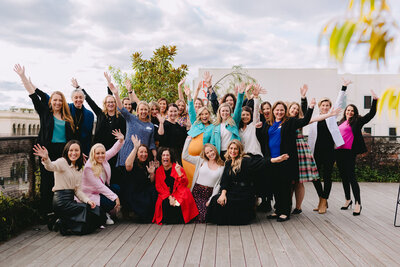

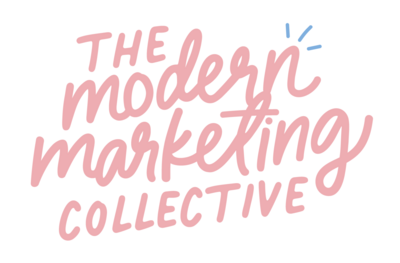

I acknowledge the Wurundjeri people as the traditional and ongoing custodians of the Kulin Nation - the place I call home, and I pay my deepest respects to their Elders past and present.
Emily Osmond is a modern marketing mentor and speaker, based in Melbourne, Australia.
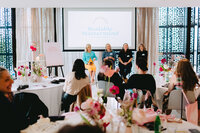









@EMILYOSMOND




MEMBER LOGIN
